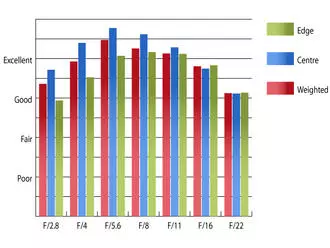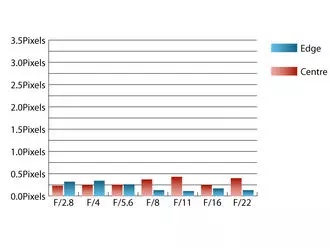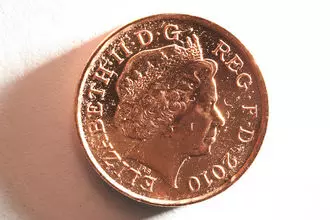Nikon 60mm f/2.8G ED AF-S Micro Nikkor User Reviews
9.5/10
average of 11 review(s)
Build Quality
9.4/10
Image Quality
9.9/10
-
10 out of 10 points
and recommendedsome test shots from an used one I bought recently — https://drive.google.com/drive/folders/0B3akmexHeHI_NVpfeUc2OF9XbDQ?usp=sharing
reviewed November 4th, 2016
-
10 out of 10 points
and recommendedSharp, very sharp
A little on the heavy side; not that cheap!A very sharp lens, excellent in every way, except a slightly heavy, at times.
Lovely portrait lens, excellent macro, good for landscape (if you’re into stitching), actually good for a lot of uses!
Oozes quality, and I got mine at a very friendly price!reviewed November 25th, 2015
(purchased for $500) -
10 out of 10 points
and recommendedlow distortion, good contrast, light weight, sufficiently sharp
If I can only carry one camera while on vacation or when weight limit is an issue, this is the lens I most often use with my D800e. Informal people photos, landscapes, and close-ups/copy-work, the 60mm G is a good bargain lens.
reviewed July 28th, 2015
-
10 out of 10 points
and recommendedShockingly sharp and distortion/CA free. Can be used with FX or DX
None.This is the only macro anyone probably needs, whether with FX or DX. You can get in close for bug’s eye views and use it handily for ordinary scenery and flower shots. Despite what some reviewers say, you can get plenty of light on the subject even close in.
reviewed October 5th, 2013
(purchased for $600) -
10 out of 10 points
and recommendedSharp, Sharp, Sharp.
None.I have been shooting a Micro Nikkor 55mm 1:2.8 since 1986 on a Nikon F3. When I bought a Nikon D90 three years ago, I bought this lens. I also have the Micro Nikkor 105mm 1:2.8. For flowers, general photography inside and outside, this is an excellent choice. It is sharper than the 55mm, or the 105mm Micro lenses.
If I could have only one lens, it would be this one.
I know all the pros advise to get the 105mm 1:2.8 to increase the working distance to critters, but this lens on an FX camera is very useful for so much more than closeup stuff. I’ll am using it on a Nikon D800E as a general purpose lens.reviewed April 4th, 2012
-
6 out of 10 points
and recommendedSmooth AF, manual focusing possible any time, full frame compatible
changes focal length at higher magnification, somewhat bulkyI have now tested several samples. Although it seems to be a sharp lens, one should know that the focal length changes considerably at higher magnification ratio. At 1:1, the working distance is only about 5 cm cmpared to the Tamron 60 mm lens in which the working distance is about 10 cm (on a Nikon D300, APS-C sensor).
Therefore the lens will cast its own shadow on the subject to be photographed. For me this is clearly not acceptable. I am still looking for a decent 60 mm macro lens for Nikon (the Tamron 60 mm f/2 having an unpleasant tendency to underexpose).reviewed April 1st, 2010
-
10 out of 10 points
and recommendedSuper obiektyw do makro i portretu.Ostrość — żyleta.
reviewed February 12th, 2009
-
10 out of 10 points
and recommendedSharpness, Build quality, AF speed!
noneReally sharp, very thin DoF.
Build quality is great, autofocus is INCREDIBLY fast, even compared to the 18-55 VR and 55-200mm VR lenses.
Simply a great lens, at a bargain price.reviewed January 26th, 2009
(purchased for $500) -
10 out of 10 points
and recommendedSharpest lens I ever used, fast AF, FTM, very well built lens, great color rendition.
none.I think this is the best Nikon lens .PERIOD.
This is sharper than anything else , I hope Nikon makes all lenses this good , the new Nikon lenses released in this year were all so good , so they should make the orver priced unsharp 17-55f2.8DX as good as the 16-85Vr or this one with Nano Crystal coating.
I hope Nikon will replace the 85f1.8 with SWM and Nano Crystal coating , the 85f1.8 and 1.4 are both already very good lenses though.
Forgot to tell you this lens works great on the D3 at my work , my personal camera is the D300 and D90 , but I think this lens works better with the D3 with more beautiful bokeh than I can get with DX body.reviewed December 2nd, 2008
(purchased for $560) -
10 out of 10 points
and recommendedRazor sharp
Can’t think of anyExcellent image quality! Fine piece of lens. AF is fast.. build and feel is solid.
This lens is seriously sharp with excellent color rendition.
Worth every penny!reviewed June 2nd, 2008
(purchased for $540) -
9 out of 10 points
and recommendedLightweight, crisp photos
AF can be slow but manual is what I normally use for macro stuffThis is a good 60mm lens. The extra 200USD extra you spend compared to the older 60mm lens is well worth the quality of pictures as well as the IF.
reviewed April 18th, 2008
(purchased for $624)
Nikon 60mm f/2.8G ED AF-S Macro Nikkor Verdict
Those looking for a short focal length macro lens for their Nikon camera can’t go far wrong with this new 60mm from Nikon. It is competitively priced and well featured, with the fast silent wave focusing motor and Nano Crystal lens coatings.
Resolution-wise it delivers sharp, contrasty images at all apertures and should satisfy even the most discerning photographer in this department. The lack of a focus limiter switch and pronounced falloff of illumination at wide apertures may pose issues for some, but so long as you are aware of these issues, they can easily be worked around.
| The Nikon 60mm f/2.8G lens is well featured, competitively priced and delivers sharp, contrasty images. |
Nikon 60mm f/2.8G ED AF-S Macro Nikkor Cons
Falloff of illumination towards the corners at wide aperturesNo focus limiter switch.
| FEATURES | |
| HANDLING | |
| PERFORMANCE | |
| VALUE FOR MONEY | |
| OVERALL |
Внешний вид и характеристики Nikkor Z 40mm F/2
Илья Кайгородов / Photar.ru
Nikkor Z 40mm F/2 получил относительно компактный корпус — длина 45,5 см, а вес всего 170 грамм. Однако, это всё же не самый миниатюрный полнокадровый объектив в линейке Z. В размерах ему соперник лишь Nikkor Z 28mm f/2.8. Экстерьер новинки абсолютно минималистичен. Здесь нет никаких переключателей, никакой градуировки, лишь одно электронное кольцо фокусировки. К слову, функцию кольца можно переназначить в меню на управление диафрагмой (что особенно оценят видеооператоры), а также управление ISO и компенсацией экспозиции.
Илья Кайгородов / Photar.ru
Как и все бюджетные объективы, Nikkor Z 40mm собран из пластика, в том числе и байонетное крепление. Объектив представляет из себя герметичную, защищенную от попадания пыли/влаги конструкцию. На объективе не предусмотрено крепления для бленды.
Илья Кайгородов / Photar.ru
Диаметр резьбы светофильтра 52 мм. Кстати, новый объектив 28мм f/2.8, который имеет практически идентичные размеры, также оснащён резьбой 52 мм. Таким образом, вырисовывается интересный набор для видеооператора, работающего со стедикамом – одинаковые вес и размер объективов, одинаковые светофильтры, меньше затрат финансов на светофильтры и не нужно тратить время на перебалансировку стедикама при смене объектива. Так что берём на заметку, тем более, что по оптическим возможностям для видео здесь есть чем похвастаться, но об этом чуть ниже.
Илья Кайгородов / Photar.ru
Оптическая конструкция Nikkor Z 40mm F/2 состоит из 6 элементов в 4 группах, включая две асферические линзы, призванные уменьшить не только размеры самой конструкции, но и сократить геометрические искажения.
Минимальная дистанция фокусировки составляет 29 см, что в сочетании с фокусным расстоянием 40 мм на полном кадре дайте масштаб 1:5. Если установить объектив на APS-C камеру, то мы уже получаем эквивалентное фокусное расстояние 60 мм и масштаб приблизительно 1:2.4, что делает этот объектив применимым в макрофотографии. К слову, объектив довольно стильно смотрится на камере Nikon Z fc и нисколько не портит общий ретродизайн.
Илья Кайгородов / Photar.ru
Максимальная диафрагма, как ясно из названия, f/2, минимальная – f/16. Конструкция диафрагмы состоит из 9 скруглённых лепестков. Также следует отметить, что здесь установлен линейный мотор автофокуса, который работает очень тихо. Автофокусировка внутренняя, это означает, что ни передняя, ни задняя линзы не движутся во время наведения на фокус.
Lens Specifications
| Manufacture | Nikon |
| Made in | Japan |
| Year Released | 1989 |
| Original Price | $277.95* |
| Elements Groups | 8 ele. 7 gr. |
| Focal Length | 60mm |
| Aperture | f/2.8-32 |
| # Aperture Blades | 7 |
| Aperture Control | Manual, Auto Diaphragm |
| Focus Type | Manual |
| Hard Infinity Stop | Yes |
| Magnification | 1:1 |
| Minimum Focus Distance | 21.9cm (8.6”) |
| Working Distance | 7.5cm (2-15/16″) |
| Filter Threads | 62mm |
| Weight | 16oz (460g) |
| Dimensions | ⌀70mm x 96mm (2.75″ x 3.75″) |
Note: Price is from a 1989 Competitive Camera Corp Catalogue.
Lens Distance Window and Aperture Ring
Accessories
The HN-22 lens hood is designated for this lens. Increasing the lens magnification brings the front element forward.
At 1:1 magnification the front element is only recessed into the lens by ~1/2″ (13mm). When focused at infinity the front element is recessed ~1.5″ (4cm).
A lens hood should not be necessary for most shooting. For situations that can be highly prone to lens flare, a lens hood would be good to have.
Buy Now
Used Nikon AF-S DX Nikkor 17-55mm f/2.8G I…
Heavily Used £134
Used Nikon AF-S Nikkor 400mm f/2.8E FL ED VR
Heavily Used £2799
Used Nikon AF-S Nikkor 14-24mm f/2.8G IF-ED
Like New £679
Used Nikon AF Nikkor DX 10.5mm f/2.8G ED F…
Like New £189
Used Nikon AF-S Nikkor 500mm f/5.6E PF ED VR
Like New £2499
Used Nikon AF-S Nikkor 50mm f/1.4G
Like New £149
Used Nikon AF-S Nikkor 200-500mm f/5.6E ED VR
Like New £934
Used Nikon Nikkor Z 50mm f/1.8 S
Like New £479
Used Nikon Nikkor Z 40mm f/2
Like New £199
Used Nikon Nikkor Z DX 16-50mm f/3.5-6.3 VR
Like New £149
Sell or trade used photo and video kit with MPB
|
We don’t have the latest price however the link below will take you to the most relevant items. Nikon AF-S Micro Nikkor 60mm f/2.8G ED |
We don’t have the latest price however the link below will take you to the most relevant items. Nikon AF-S Micro Nikkor 60mm f/2.8G ED |
We transform the way that people buy, sell and trade in photo and video kit. USED NIKON |
Support this site by making a Donation, purchasing Plus Membership, or shopping with one of our affiliates:
Amazon UK,
Amazon US,
Amazon CA,
ebay UK,
MPB. It doesn’t cost you anything extra when you use these links, but it does support the site, helping keep ePHOTOzine free to use, thank you.
ADVERTISEMENT
Other articles you might find interesting…
Nikkor Z DX 24mm F/1.7 Lens Review
Fujifilm XF 8mm F/3.5 Review
Canon RF-S 55-210mm Review
SIGMA AF 14mm f/1.4 DG DN | Art Lens Review
Best Third Party Nikon F Lenses (DSLR)
Astrodesign & Samyang Join The L-Mount Alliance
Best Canon EF And EF-S Lenses
Sony FE 70-200mm f/4 G OSS II Lens Announced — Take A Look A…
Reasons to Buy Nikon AF-S Micro-Nikkor 60mm f2.8G ED Lens
Here we’ve included a summary of the advantages and disadvantages of the Nikon AF-S Micro-Nikkor 60mm f2.8G ED lens in a list form to help you determine whether it offers the features you need.
PROs
| Autofocus |
| Distance Scale |
| DoF(Depth of Field) Scale |
| Hood supplied |
| Full-time Manual Focusing |
| Internal Focusing |
| Covers Full-Frame Sensor |
| 9 Diaphragm Blades for Smooth Bokeh |
| High Max Magnification ratio of 1x |
| Minimum focus distance of 0.19m / 7.5 inch |
Report a correction
Buy Nikon Micro-60mm f2.8G ED from or B&H PHOTO
CONs
We couldn’t find any significant Cons for the Nikon AF-S Micro-Nikkor 60mm f2.8G ED
Lens Mount
Nikon Micro-60mm f2.8G ED is compatible with cameras that have a Nikon F (FX) lens mount. Some of the latest released cameras that are compatible with the Nikon F (FX) lenses are Nikon D6, Nikon D780 and Nikon D3500.
Size, Weight and Filter Thread
Size and weight is a very important decision factor when searching for your next lens. Nikon Micro-60mm f2.8G ED has a maximum diameter of 73mm and total length of 89mm. It weighs 425g / 15.0 oz.
Nikon Micro-60mm f2.8G ED has a filter thread of 62mm. Below are links to the filters that we recommend you to consider for your Nikon Micro-60mm f2.8G ED:
Optical Image Stabilization
Nikon Micro-60mm f2.8G ED doesn’t have an optical image stabilization system so the only option to stabilize the image taken with this lens is to mount on a camera body with IBIS (sensor based In-body image stabilization).
Zoom Method
Nikon Micro-60mm f2.8G ED features Rotary (internal) zoom method where the length of the lens doesn’t change while you are zooming in or out. Even though this design has a size disadvantage in general compared to extending designs, it has the benefits of better sealing against dust and moisture, no zoom creep and no weight balance shift while zooming.
Maximum Magnification Ratio
Nikon Micro-60mm f2.8G ED has a Max Magnification Ratio of 1x and has a minimum focusing distance of 0.19m.
Below are the 3 Macro Prime type Nikon F mount lens alternatives with highest max magnification ratios:
- Venus 25mm F2.8 2.5-5X Ultra Macro: 5x — (Compare)
- Venus 24mm F14 2x Macro Probe: 2x — (Compare)
- Venus 100mm F2.8 2X Ultra Macro : 2x — (Compare)
Optical Formula
Nikon Micro-60mm f2.8G ED’s optical formula consists of 12 elements in 9 groups . Following special elements are used in this design:
- 1 ED glass lens
- 2 aspherical lenses
- 1 with Nano Crystal Coat
Lens Hood
Nikon Micro-60mm f2.8G ED comes with a removable lens hood which is handy to reduce lens flare and glare in your photos. The model number of the hood is HB-42.
Popular Comparisons of Nikon Micro-60mm f2.8G ED
Top Alternatives of Nikon Micro-60mm f2.8G ED Lens
| Model | Coverage | Weight | Focusing | Street Price | |
|---|---|---|---|---|---|
|
Nikon Nikkor Z MC 50mm F2.8 Compare |
35mm FF | 260 g / 0.57 lb | AF | ||
|
Nikon AF Micro-Nikkor 60mm f2.8D Compare |
35mm FF | 440 g / 0.97 lb | AF | ||
|
Nikon AF-S Nikkor 50mm f1.8G Compare |
35mm FF | 185 g / 0.41 lb | AF | ||
|
Nikon AF-S Nikkor 58mm f1.4G Compare |
35mm FF | 385 g / 0.85 lb | AF | ||
|
Sigma 50mm F2.8 EX DG Macro Compare |
35mm FF | 320 g / 0.70 lb | AF | ||
|
Tamron SP AF 90mm F2.8 Di Macro Compare |
35mm FF | 405 g / 0.89 lb | AF | ||
|
Nikon AF Nikkor 50mm f1.4D Compare |
35mm FF | 230 g / 0.51 lb | AF | ||
|
Tokina AT-X Pro 100mm f2.8 Macro Compare |
35mm FF | 540 g / 1.19 lb | AF |
Conclusion
If the lens is cheap enough, or you already own a copy of the lens, it is fine. The performance at f/8 is in line with every other comparable macro lens I have tested.
The performance at wider apertures is poor in comparison with less expensive lenses. In fact, I prefer the earlier Micro Nikkor-PC 55mm f/3.5 to this lens. I expect both of the AF Micro Nikkor 60mm lenses to depreciate in the coming years as Nikon transitions from the F-mount to the mirrorless Z-mount.
Screw drive auto focus lenses are going to fall in value. Nikon did not release an adapter that is able to power the auto focus on the screw drive AF lenses with the release of the Z6 and Z7.
The manual focus experience is not as good as fully manual lenses or with lenses that have AF motors built-in. All of the screw drive lenses that do not offer exceptional performance are going to be dropping in value over the next decade. I expect both of the 60mm AF Micro Nikkor lenses to lose value in the coming years.
I would not recommend buying this lens. In fact, if you own a copy of this lens, I suggest selling it. There are other options that are better suited to be adapted to mirrorless cameras. On top of that, they also likely perform better. I would prefer to use any of the lenses listed below:
В заключении
Мне нравится 16-80, потому что он универсальный, маленький и легкий, и удобный. Он выделяется своей относительно высокой светосилой (F/ 2.8 ~ 4) и превосходной производительностью VR, что на самом деле намного лучше, чем большинство других всех линз для кропнутых камер Nikon.
16-80mm хорошо сбалансирован во всем диапазоне фокусных расстояний. Мягкость действительно появляется в основном в углах на больших фокусных расстояниях и широких отверстиях и быстро уменьшается при при изменении диафрагмы от F8 до F11. Основной слабостью 16-80 mm является медленный автофокус, что делает его плохим выбором для спортивной съемки. Его другие недостатки — шумныей AF, малый размер кольца фокусировки весьма незначительны и с учетом цены объектива около 1000$ удержали бы меня от приобретения этой линзы. Если вы не снимаете c широко открытой диафрагмой, и не фанат боке, за то нравится снимать пейзажи и стрит фотографии — это отличный выбор.
Nikon 60mm f/2.8G ED AF-S Macro Nikkor Handling and features
Weighing 425g, this lens is relatively lightweight and compact. It balances extremely well on the Nikon D700 body used for testing, with or without the MB-D10 battery grip attached. High quality plastics have been used for much of the construction and the lens mount is metal. A rubber gasket has been fitted around the lens mount to help prevent to ingress of dust and moisture into the camera body, although the lens makes no claims about being properly weather sealed.
A large wide rubberised focus ring provides easy manual focus control. The mechanism has just the right amount of resistance for making fine adjustments. The minimum focus distance of 18.5cm provides life size magnification, but as the working distance is quite tight, care needs to be taken not to shade your subject.
Nikon’s latest Nano-Crystal coatings have been applied, which promises to help control flare and help retain contrast. A deep circular hood is also provided. As focusing is performed internally, the front filter thread does not rotate, making this lens ideal for use with graduated filters, polarisers and macro ring flashes. Focus speeds are quite fast for a macro lens, although this optic may have benefited from the inclusion of a focus limiter switch, to prevent the lens from tracking through the full focus range at times where contrast or light levels are low.
Build Quality, Design, and Sample Variation
The first thing that comes to my mind when handling the lens is the cheap plastic feeling. This is because the outer barrel of the lens is plastic, while the internals are made out of metal.
Instead of engraving, all of the text on the lens has been screen printed. Some of the text on my copy of the lens has begun to wear away. Personally, I prefer the build of earlier manual focus 55mm Micro Nikkors.
The lens has a manual/autofocus ring. This ring provides a way to change focus mode on the lens, rather than the camera.
There is a pin lock that keeps the ring in place. I do not find the pin comfortable to press, easy to locate, or enjoyable to use.
Another lens feature is the inclusion of a limit switch. When set to limit, the lens will not focus in the macro range. This will prevent focus hunting and speed up autofocus when close-focus is not needed.
I have no complaints about the location or the haptic feedback from toggling the switch.
Focus Limit Switch and Focus Ring
There is a window covering the distance scale. That is a nice feature to prevent water, dust, and debris from getting into the lens. It is a design feature that is shared among early AF and D-series lenses.
The autofocus in the lens is driven by the camera via a motor drive. It is also fairly heavy, which results in an awful manual focusing experience.
The focus ring is heavy, feels imprecise, and gives mechanical feedback when rotated. There are 360 degrees of travel between infinity and 1:1.
With the limit-switch engaged there is less than 90 degrees of travel. I do not like manually focusing with this lens.
Electronically controlling the aperture works great. There is a lock on the lens that will prevent the aperture from being changed once set to electronic control.
The aperture ring has a smaller diameter than the rest of the lens, which makes it hard to reach. A larger amount of force than expected is needed to manually change the aperture on the lens.
Manually changing the aperture was more difficult than it should be. I would often overshoot the aperture I wanted because it felt like it was stuck in place until it began to move.
This is not a problem with my copy of the lens, as the Nikon AF Micro Nikkor 105mm f/2.8 I have has the same problem. I quickly got annoyed with the aperture and focus ring with the lens adapted to a Sony A7.
My copy of the lens is in good condition. I don’t see any internal dust. There are no signs of problems with the grease.
Some of the printing on the barrel of the lens is worn. My only issue is that the manual/auto selector is a bit stiff and hard to switch. Overall, I am happy with how the lens has held up.
Nikon F-Mount Showing CPU Contacts
Test Shot Sharpness Comparison
- f/2.8 — Chromatic aberration in the corners which looks out of focus. Shockingly bad performance. I retested the lens on both the D750 and A7 because of how bad the image quality was.
- f/4 — Corners are still soft with very noticeable chromatic aberration.
- f/5.6 — The center is sharp, but the corners are still soft.
- f/8 — Outer edges of the corners are soft. Chromatic aberration is no longer visible.
- f/11 — Improvement in the corners. A slight loss in fine detail as diffraction is beginning to set in.
- f/16, f/22, f/32 — Diffraction progresses and sharpness gets worse.
100% Corner Crop at f/4
100% Corner Crop at f/11
Autofocus
The autofocus is slow and inaccurate. Manual focusing is faster for closeup and macro magnification.
On my D750 the lens hunts around and I’m not surprised when the lens misses focus. Also, the auto focus is never going to work with an adapter.
This is an early AF design by Nikon that is driven by the camera body via a screw drive. Nikon is never going to produce an adapter capable of powering the auto focus in this lens.
Macro Magnification
100% Crop, 1:1 Magnification at f/11
100% Crop, 1:1 Magnification, Taken with a Sony A7
The lens is on the heavy side, the aperture is not easy to manually operate, and the image quality is lacking. I didn’t stick the lens on my bellows because I thought that it would be an annoying experience.
Underwhelming results don’t get better by extension or reversing a lens. There are better choices, like the Vivitar 55mm f/2.8.
Comparable Lenses
- Vivitar 55mm f/2.8 Macro — Available in several lens mounts.
- Micro Nikkor 55mm f/3.5 PC
- /(olympus-om-50mm-f-3-5-zuiko-auto-macro-lens-review/)
- Canon FD Macro 50mm f/3.5
Nikkor Z 40mm F/2 для видео
Илья Кайгородов / Photar.ru
Первое о чём хочется поговорить – дыхание фокуса. Этот эффект проявляется в виде изменения масштаба при перефокусировке. Отсутствие такого эффекта очень ценится видеооператорами и характерно оно, как правило, дорогим специализированным кинообъективом. Тем не менее наш герой при перефокусировке с МДФ на бесконечность даёт изменение масштаба всего чуть более одного процента, что является очень хорошим показателем.
Также видеооператоры оценят красивый рисунок боке, который присутствует даже на закрытой диафрагме. Ну и, конечно же, быстрый и точный автофокус, также является плюсом не только для фотографии, но и для видео.
Оптическая схема Nikon 16-80mm F / 2.8-4E VR
В внутренней схеме Nikon 16-80mm F / 2.8-4E VR желтым обозначены ED стекла Синим асферические элементы.
- 17 элементов в 13 группах.
- 4 ED элемента.
- 3 асферические линзы
- Минимальная дистанция фокусировки 0,35м от плоскости изображения.
- Максимальная кратность увеличения при зумировании 1: 4,5.
- Диафрагма Nikon 16-80 мм
- 7 закругленных лепестков диафрагмы.
- Минимальные цифры F/22-32.
С электронным управлением для более тихой работы, что не совместимо с камерами, произведенными до 2007 года.
Максимальная и минимальная диафрагма на различных фокусных расстояниях
| максимальная | минимальный | |
| 16мм | F / 2.8 | F / 22 |
| 24мм | F / 3 | F / 24 |
| 35мм | F / 3.3 | F / 27 |
| 50мм | F / 3.5 | F / 29 |
| 80мм | F / 4 | F / 32 |
Фокусное расстояние 16-80 мм эквивалентно 24-120 для FX или 35 — мм камеры.
Углы обзора Nikon 16-80 мм 83° — 20° для DX.
Объектив комплектуется HB-75 пластиковой байонетного крепления блендой.
Автофокус
Он достаточно быстрый и точный, но далеко не мгновенный и не беззвучный. Мотор звучит по аналогии с более дешевыми, используемыми в наименее дорогих DX объективах Nikon.
Ручная фокусировка
Кольцо ручной фокусировки. Доступно и удобно в любое время для мгновенной ручной фокусировки. Ручная фокусировка происходит медленно на любом фокусном расстоянии.
Nikon 60mm f/2.8G ED AF-S Macro Nikkor Performance
At maximum aperture, the lens already produces images with very good sharpness in the centre on the frame, with the quality towards the edges approaching good levels.
Stopping the lens down improves quality across the frame until f/5.6, where the sharpness in the centre is outstanding and the clarity towards the edges of the frame is excellent. At smaller apertures, diffraction reduces resolution across the frame, but results are still good at f/22.
 MTF at 60mm |
The blue column represents readings from the centre of the picture frame at the various apertures and the green is from the edges. Averaging them out gives the red weighted column. |
Chromatic aberrations are extremely well controlled at all apertures and across the entire image area. At its very worst fringing just exceeds 0.4 pixel widths in the centre of the frame at apertures smaller than f/11. This low level of fringing should be virtually invisible, even in large prints.
 Chromatic Aberrations at 60mm |
Chromatic aberration is the lens’ inability to focus on the sensor or film all colours of visible light at the same point. Severe chromatic aberration gives a noticeable fringing or a halo effect around sharp edges within the picture. It can be cured in software. |
Falloff of illumination towards the corners with this lens may be an issue for some photographers. At f/2.8 falloff is very pronounced on full frame, with the corners being 3.3 stops darker than the image centre. Visually uniform illumination isn’t achieved until the lens is stopped down to between f/5.6 and f/8.
As might be expected from a fixed focal length lens, distortion is very well corrected. Imatest detected 0.439% barrel distortion, which is a very slight amount. If your application requires completely straight lines, this low level of distortion will be very straightforward to correct in image editing software afterwards, as the distortion pattern is consistent across the frame.
Nikon’s Nano Crystal coating does an excellent job of reducing flare and retaining contrast, even in harshly contra-lit situations. The deep circular hood also does an excellent job of shading the front element, although it may need to be removed at close working distances to prevent it shading your subject.
 Good sharpness is retained, even at small apertures — 1/60 sec | f/16.0 | 60.0 mm | ISO 200 |
 Sharpness is outstanding in the centre at f/5.6 — 1/125 sec | f/5.6 | 60.0 mm | ISO 900 |
|
 As the front filter thread does not rotate, this lens is ideal for use with graduated filters — 1/400 sec | f/8.0 | 60.0 mm | ISO 200 |
 Falloff of illumination towards the corners can be quite pronounced at wide apertures — 1/125 sec | f/3.0 | 60.0 mm | ISO 1250 |
|
 1/125 sec | f/10.0 | 60.0 mm | ISO 200 |
 1/125 sec | f/10.0 | 60.0 mm | ISO 320 |
|
 1/125 sec | f/5.6 | 60.0 mm | ISO 400 |
 1/125 sec | f/5.6 | 60.0 mm | ISO 3200 |
Тестирование Nikkor Z 40mm F/2
Nikon Z6 + Nikkor 40/2. Параметры: 1/160, ISO320, f/2. Павел Молчанов / Photar.ru
Начнём, как обычно, с резкости. Все тестовые кадры были сохранены в формате RAW, далее открыты в программе RawDigger и экспортированы в TIFF-файл. Весь этот процесс требуется для отключения всевозможных внутрикамерных корректировок, от которых нельзя избавиться в стандартных конвертерах типа Lightroom и Capture One. Помимо прочего, ниже мы анализируем не только центр и периферию, но и периферию относительно APS-C матрицы.
| f/2.0 | |||
| f/2.8 | |||
| f/4.0 | |||
| f/5.6 | |||
| f/8 | |||
| f/11 | |||
| f/16 |
Nikkor Z 40mm F/2 не может похвастаться звенящей резкостью, тем не менее центр максимально резкий уже на открытой диафрагме. Если сравнить полный кадр и APS-C, то можно заметить резкое снижение качества на периферии полного кадра, тогда как APS-C значительно превосходит по резкости. Таким образом, на кроп-камере мы можем получить более качественную картинку по всему полю кадра, нежели на полном кадре. Максимально возможная резкость по всему полю кадра Nikkor Z 40мм f/2 достигается в диапазоне f/4-11.
Хроматические аберрации
Как правило, я анализирую два типа аберраций – продольные и поперечные, характер их проявления несколько отличается. Однако, Nikkor Z 40mm F/2 в этом аспекте очень порадовал – мы наблюдаем практически полное отсутствие хроматических аберраций. Здорово!
| f/2.0 | ||
| f/2.8 | ||
| f/4.0 | ||
| f/5.6 | ||
| f/8 | ||
| f/11 | ||
| f/16 |
Астигматизм и кома
Коматические аберрации и астигматизм проявляются в виде искажения световых точек. Это актуально при съёмке звёзд или ночного города. Кома проявляется на периферии кадра и исправляется диафрагмированием, а астигматизм, как правило, ближе к центру на всех значениях апертуры. Итак, смотрим, справа кома, слева – астигматизм:
| f/2.0 | ||
| f/2.8 | ||
| f/4.0 | ||
| f/5.6 | ||
| f/8 | ||
| f/11 | ||
| f/16 |
Проявление астигматизма для Nikkor Z 40mm F/2 полностью не характерно, а вот коматические аберрации довольно сильно заметны на открытых диафрагмах. Приблизительно после f/4 кома исчезает, что надо сказать неплохо для объектива с таким фокусным расстоянием.
Геометрия
Nikkor Z 40mm F/2 обладает незначительной бочкообразной дисторсией – очень хороший показатель для такого фокусного расстояния.
Виньетирование
Проявление виньетирования на максимально открытой диафрагме в объективе Nikkor Z 40mm F/2 не сильно интенсивное. Эффект виньетки полностью исчезает начиняя с f/4.
Боке
Nikon Z6 + Nikkor 40/2. Параметры: 1/80, ISO100, f/2. Павел Молчанов / Photar.ru
Рисунок боке Nikkor Z 40mm F/2 приятно удивил. Световые диски практически не искажают свою форму, что встретишь не так часто. Более того, диски имеют равномерное заполнение без проявления эффекта луковых колец.
| f/2.0 | |
| f/2.2 | |
| f/2.5 | |
| f/2.8 | |
| f/4.0 | |
| f/5.6 | |
| f/8 | |
| f/11 | |
| f/16 |





























